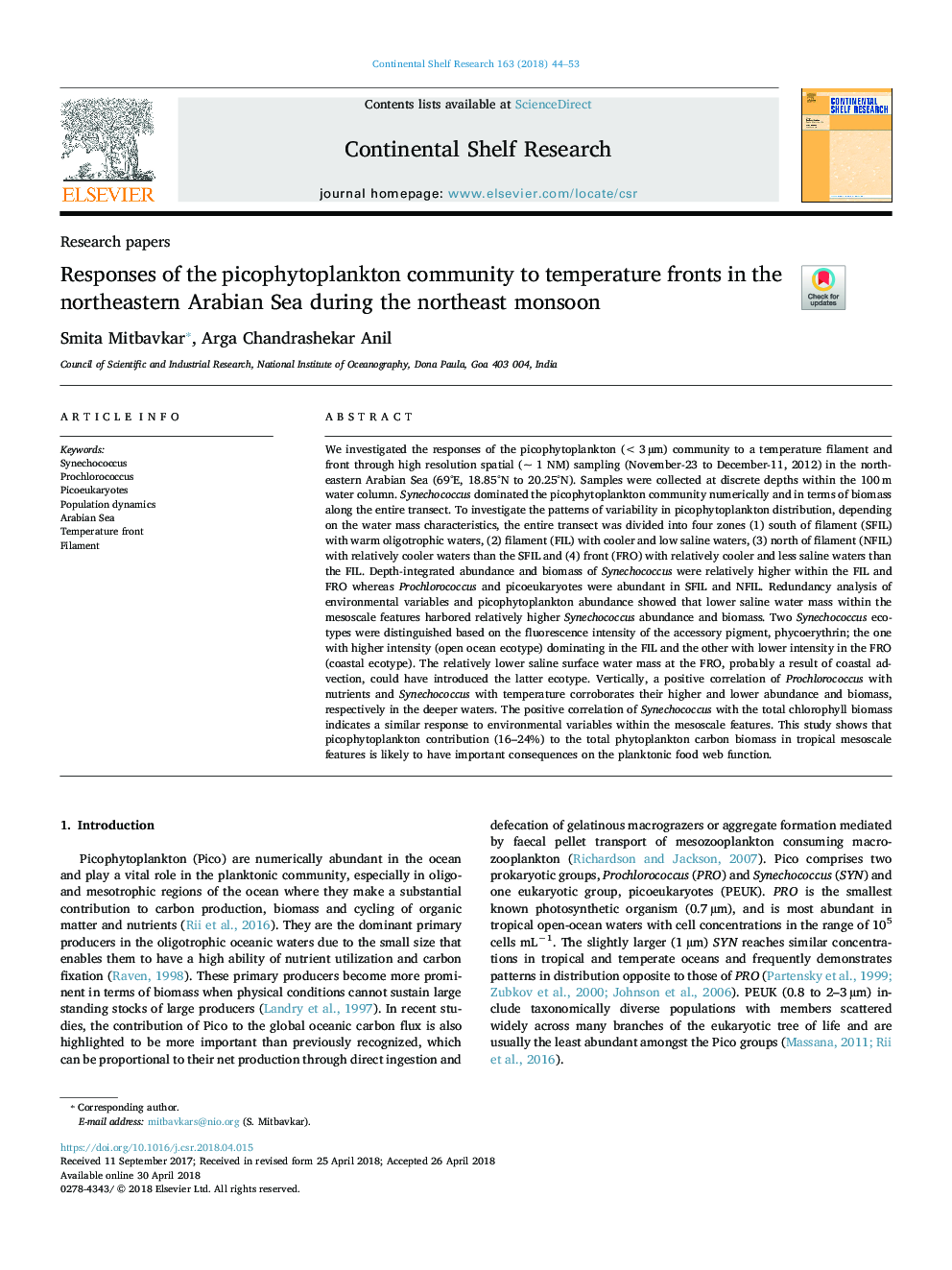| کد مقاله | کد نشریه | سال انتشار | مقاله انگلیسی | نسخه تمام متن |
|---|---|---|---|---|
| 8884031 | 1626050 | 2018 | 10 صفحه PDF | دانلود رایگان |
عنوان انگلیسی مقاله ISI
Responses of the picophytoplankton community to temperature fronts in the northeastern Arabian Sea during the northeast monsoon
ترجمه فارسی عنوان
پاسخ جامعه پیکوتیوپلانکتون به جبهه دما در دریای شمال شرقی دریای آرام در شمال
دانلود مقاله + سفارش ترجمه
دانلود مقاله ISI انگلیسی
رایگان برای ایرانیان
کلمات کلیدی
موضوعات مرتبط
مهندسی و علوم پایه
علوم زمین و سیارات
زمین شناسی
چکیده انگلیسی
We investigated the responses of the picophytoplankton (< 3â¯Âµm) community to a temperature filament and front through high resolution spatial (~ 1 NM) sampling (November-23 to December-11, 2012) in the northeastern Arabian Sea (69°E, 18.85°N to 20.25°N). Samples were collected at discrete depths within the 100â¯m water column. Synechococcus dominated the picophytoplankton community numerically and in terms of biomass along the entire transect. To investigate the patterns of variability in picophytoplankton distribution, depending on the water mass characteristics, the entire transect was divided into four zones (1) south of filament (SFIL) with warm oligotrophic waters, (2) filament (FIL) with cooler and low saline waters, (3) north of filament (NFIL) with relatively cooler waters than the SFIL and (4) front (FRO) with relatively cooler and less saline waters than the FIL. Depth-integrated abundance and biomass of Synechococcus were relatively higher within the FIL and FRO whereas Prochlorococcus and picoeukaryotes were abundant in SFIL and NFIL. Redundancy analysis of environmental variables and picophytoplankton abundance showed that lower saline water mass within the mesoscale features harbored relatively higher Synechococcus abundance and biomass. Two Synechococcus ecotypes were distinguished based on the fluorescence intensity of the accessory pigment, phycoerythrin; the one with higher intensity (open ocean ecotype) dominating in the FIL and the other with lower intensity in the FRO (coastal ecotype). The relatively lower saline surface water mass at the FRO, probably a result of coastal advection, could have introduced the latter ecotype. Vertically, a positive correlation of Prochlorococcus with nutrients and Synechococcus with temperature corroborates their higher and lower abundance and biomass, respectively in the deeper waters. The positive correlation of Synechococcus with the total chlorophyll biomass indicates a similar response to environmental variables within the mesoscale features. This study shows that picophytoplankton contribution (16-24%) to the total phytoplankton carbon biomass in tropical mesoscale features is likely to have important consequences on the planktonic food web function.
ناشر
Database: Elsevier - ScienceDirect (ساینس دایرکت)
Journal: Continental Shelf Research - Volume 163, 1 July 2018, Pages 44-53
Journal: Continental Shelf Research - Volume 163, 1 July 2018, Pages 44-53
نویسندگان
Smita Mitbavkar, Arga Chandrashekar Anil,
